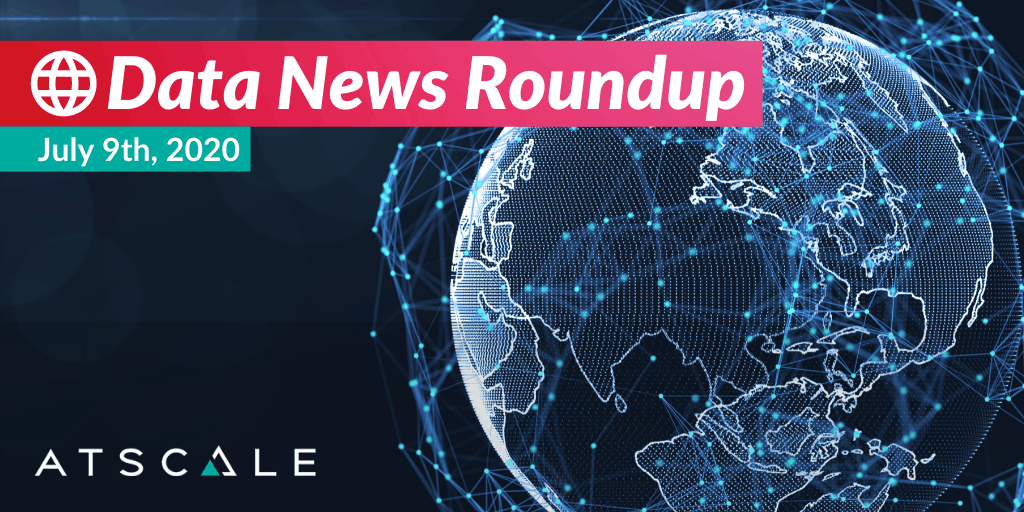
Welcome to this week’s edition of AtScale’s Data News Roundup blog series for Thursday, July 9th. In this week’s roundup, we share some exciting AtScale news. We’ve expanded our COVID-19 data semantic model to include employment data from the US Bureau of Labor Statistics, mobility data from Google, aggregated restaurant reservations data from OpenTable, and more. CEO Chris Lynch also shares his thoughts on the concept of “cheaper,” which he feels represents a race to the bottom and one where only commodities need apply.
Last, Rakuten and AtScale will be hosting a live webinar on July 23rd to discuss how companies can realize an additional 270% ROI on their Snowflake investment by adopting best practices learned through hands-on experience (sometimes the hard way). Register here!
AtScale expands COVID-19 data semantic model – July 7th, 2020
By Andrew Brust
ZDNet
Alongside core pandemic data from Johns Hopkins CSSE and the New York Times, AtScale’s model now includes employment data from the US Bureau of Labor Statistics, mobility data from Google, aggregated restaurant reservations data from OpenTable, and more.
Why The Big Cloud Providers Are Falling Short On Hybrid – July 7th, 2020
By Murli Thirumale
Forbes
Two facts: First, applications and data are inseparable, like peanut butter and jelly. Second, nearly every enterprise today has a hybrid cloud strategy, combining public cloud with their on-premises infrastructure. The problem is, these two realities are often at odds, and public cloud vendors aren’t doing enough to close the gap
The Myth of “The Cloud is Cheaper” – July 8th, 2020
By Chris Lynch, Executive Chairman and Chief Executive Officer, AtScale
DATAVERSITY
As we have all experienced recently, change is the only constant that continues to be true, decade in and decade out. Irrespective of pandemics, macro or microeconomic uncertainty, or even geopolitical unrest — one thing is guaranteed, especially in tech: change.
There’s been a significant investment of marketing dollars, engineering time, and development and market research on “the cloud” in recent years. Market segments have been created, massive amounts of venture capital deployed, and companies espousing the promise of cheaper, better, and faster have all been chasing Amazon Web Services (AWS) for what feels like a decade. One of the more intriguing panaceas in these developments is that “the cloud is cheaper.” As a longtime industry executive, Founder, CEO, and venture capitalist, the concept of “cheaper” has, in my opinion, always represented a race to the bottom and one where only commodities need apply.
The Enterprise Is In The Clouds: The Trends And Predictions Of Cloud Adoption – July 9th, 2020
By Guest Contributor
Data Economy
Much has changed since O’Reilly fielded the annual Cloud Adoption report in early 2020 and more still has changed since we released our analysis. Some of these changes are pivotal to the future of cloud adoption, so cannot be ignored or overlooked.
Despite the caveats and taking the impact of COVID-19 into consideration, the survey serves as a good indicator of the state of the enterprise, its habits, preferences and general attitudes towards cloud. It is a leaping off point.


SHARE
Guide: How to Choose a Semantic Layer